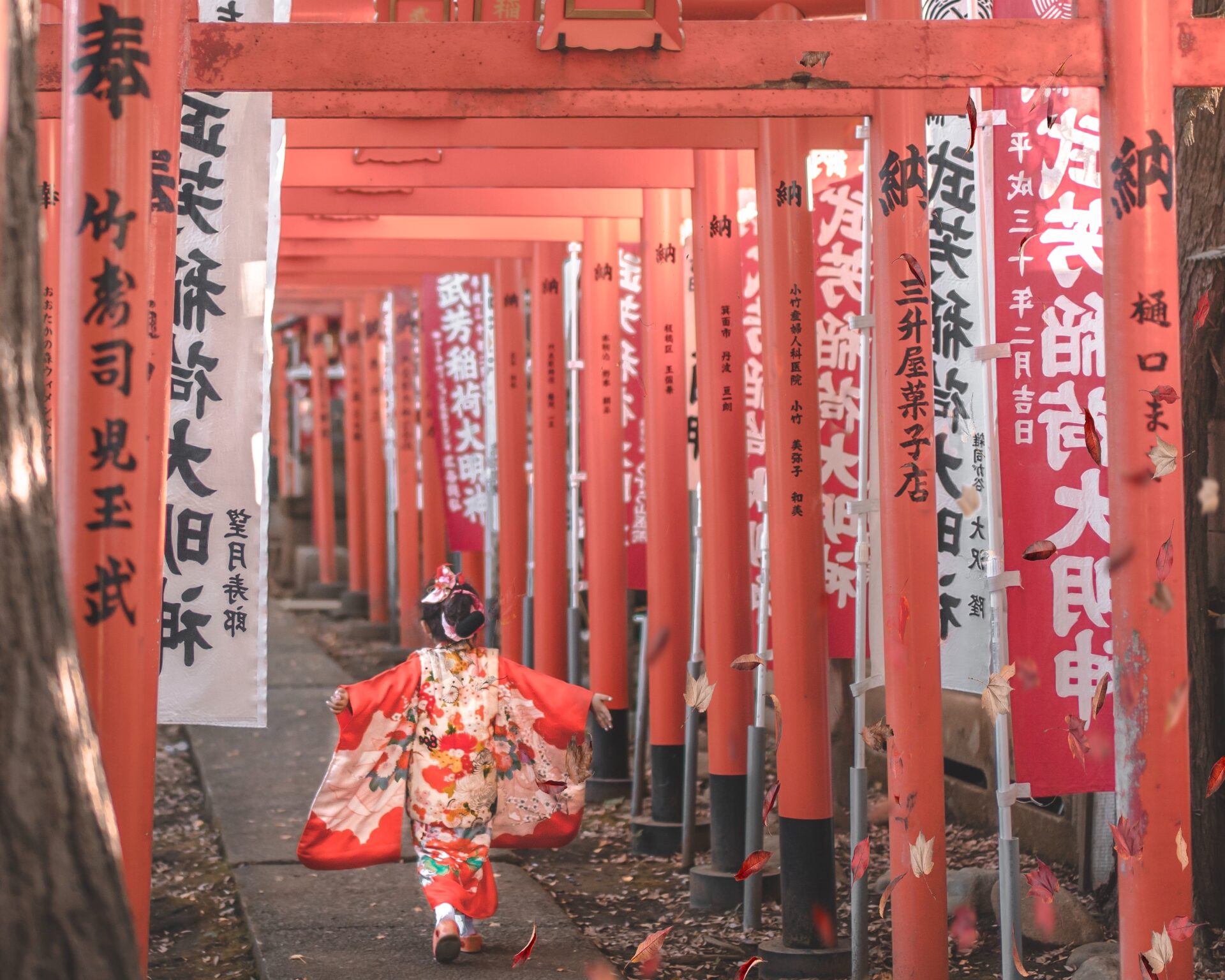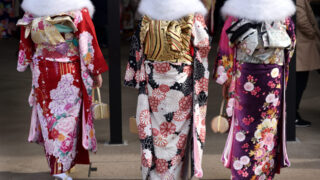Japan has unique holidays and events that have been part of Japanese people’s lives since ancient times. Every month throughout the year, we celebrate special days which include some memorable days designed for children such as Girl’s Day on March 3rd and Children’s Day on May 5th. Shichigosan is also traditionally held on November 15th and probably can be found only in Japan. What is Shichigosan? How do Japanese people celebrate this special day? Here you can get the basic knowledge of the Shichigosan ceremony in Japan!
What is Shichigosan?
Shichigosan is an annual event that takes place on November 15th. The name of “Shichi-go-san” literally means seven, five and three years of age in Japanese. When children reach these certain ages, parents take them to Shinto shrines or temples to celebrate their healthy growth and pray for their happy future. Children are dressed up in traditional Japanese outfits such as Kimono for girls and Hakama for boys which are typically worn on special occasions.
Shichigosan is traditionally celebrated at different ages for girls and boys. While girls celebrate the special day at the age of three and seven, boys are commonly celebrated when they turn three and five years old. This custom may vary depending on the region, and in modern days many people celebrate all of these ages regardless of the gender of their children. As we mentioned, Shichigosan is traditionally on November 15th, but some people celebrate Shichigosan in their favorite season to avoid the crowds and in accordance with their schedule.
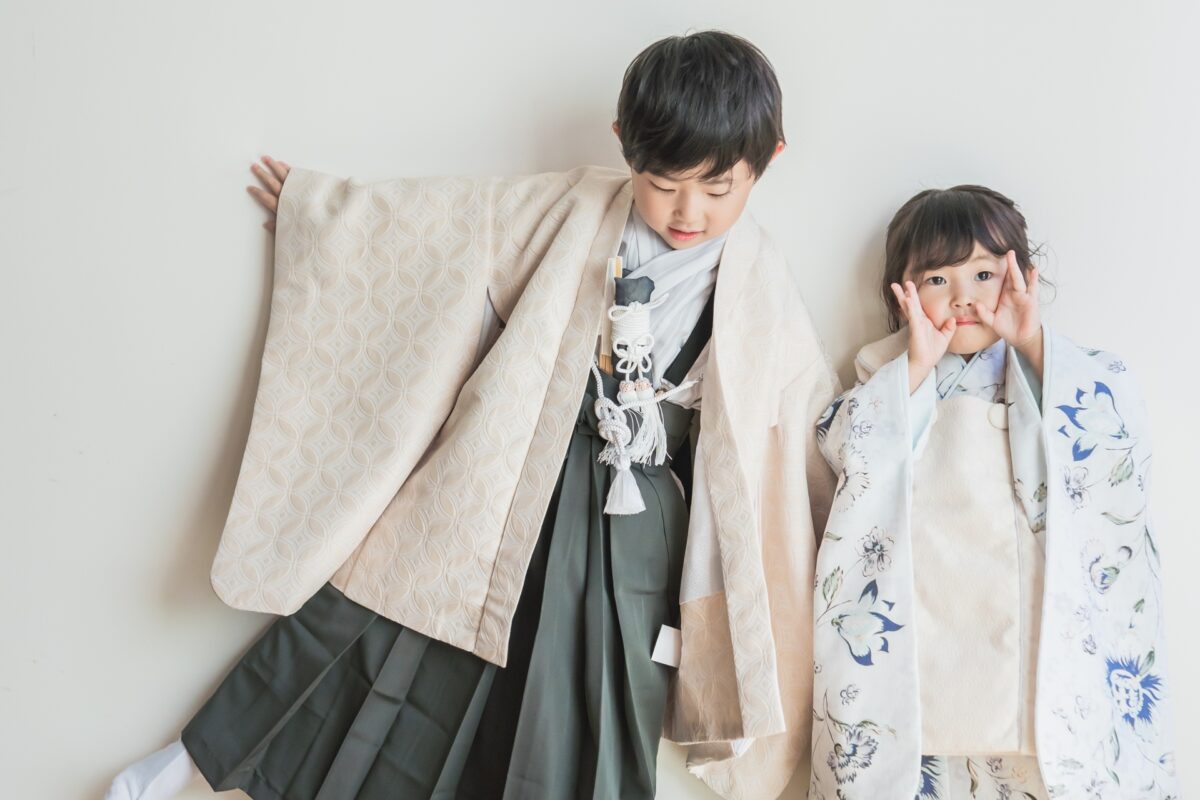
Brief History of Shichigosan
The origin of Shichigosan is believed to date back in the Heian period which is from 794 until 1185. In those days, the infant mortality rate was significantly higher than today due to poor hygiene and a shortage of effective medical care. Therefore, parents had to wait until their children reached the age of three which was considered mature enough to officially register them as a new member of the family. Five and Seven years of age were also regarded as an important milestone in their lives.
During that time, there were also special ceremonies to be held for children at three, five and seven years old. The first one was called Kamioki (髪置き), which was held to keep hair of new-born babies shaved until they turned three years old. When they became three, they were officially entitled to grow out their hair. Hakamagi (袴着) was a second ceremony for five-year-old boys which allowed them to wear Hakama, traditional Japanese formal attire for the first time. Obitoki (帯解き) was for seven-year-old girls and they could wear Obi tie around their Kimono instead of a simple cord. It was during the Meiji period (1868 -1912) that the custom of Shichigosan finally started to spread throughout Japan from upper Samurai class down to ordinary people.
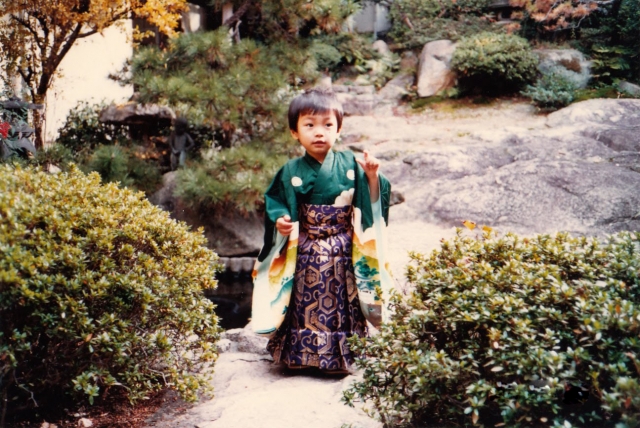
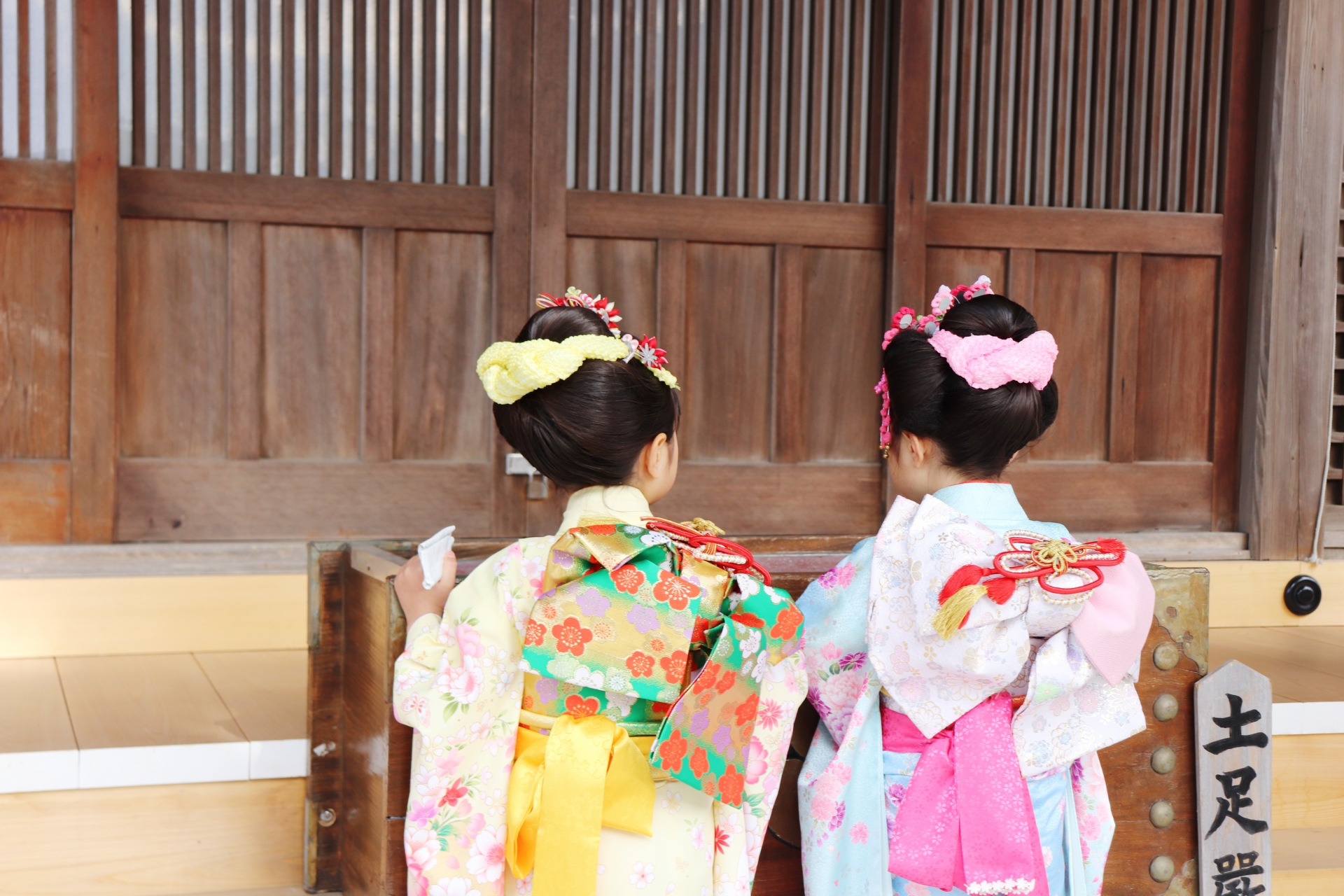
How do Japanese People Celebrate Shichigosan?
Japanese people celebrate Shichigosan in different ways. Here are some ideas and traditional ways to celebrate the special day!
Visit shrines and temples
Many people visit Shinto shrines or temples in their neighborhoods to celebrate Shichigosan in Japan. Some shrines and temples hold special ceremonies on Shichigosan Day, and people can attend them to pray for happiness and health for their children. There are no specific rules for what to wear on Shichigosan day, but most people typically prepare traditional Japanese outfits such as Kimono and Hakama for their children.
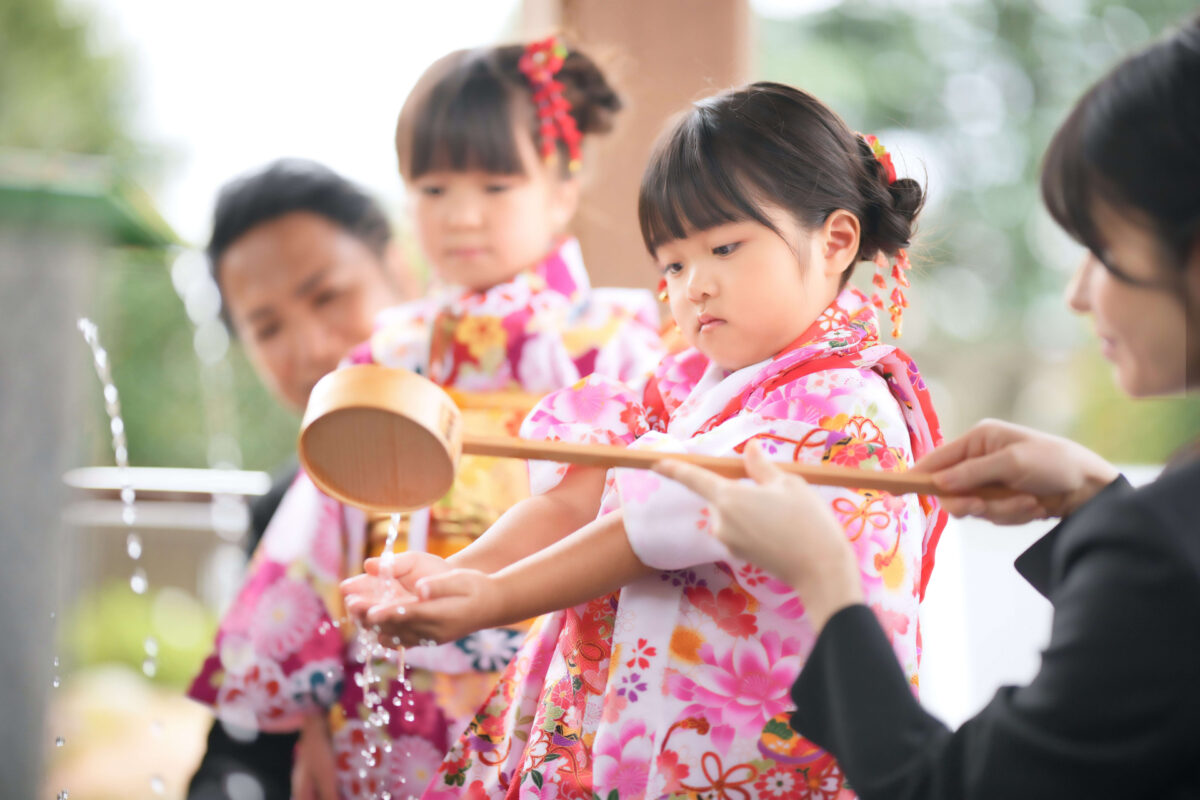
Buy and eat Chitose-ame (thousand-year candy)
Chitose-ame is a traditional sweet treat sold at shrines and temples on Shichigosan day. This special candy has a unique shape like a long stick which symbolizes longevity. Chitose-ame is typically sold in a bag with pictures of turtles and cranes which have been loved as a symbol of good fortune and a long life in Japan since ancient times. Parents buy and give the candy to their children wishing them a long and healthy life.
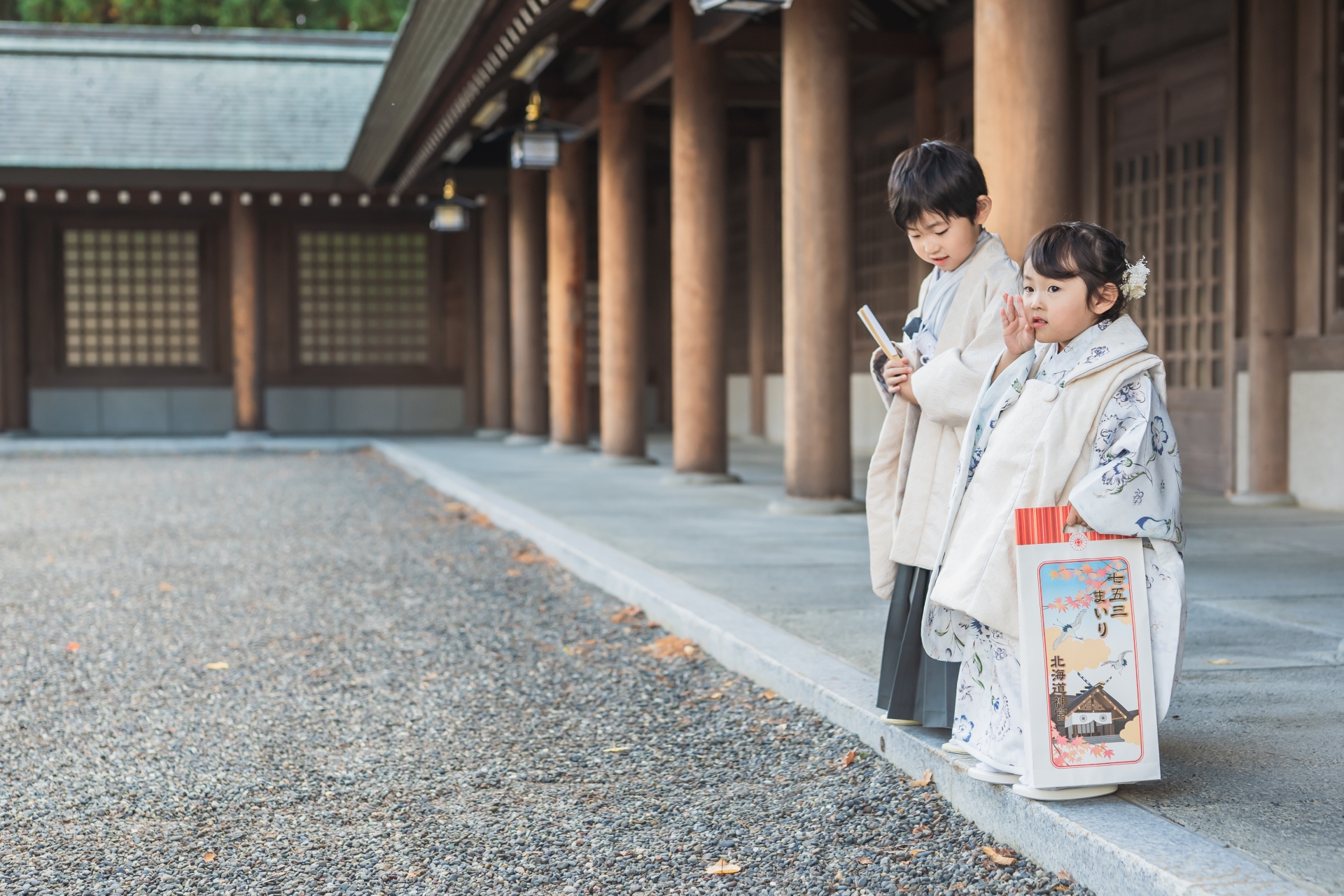
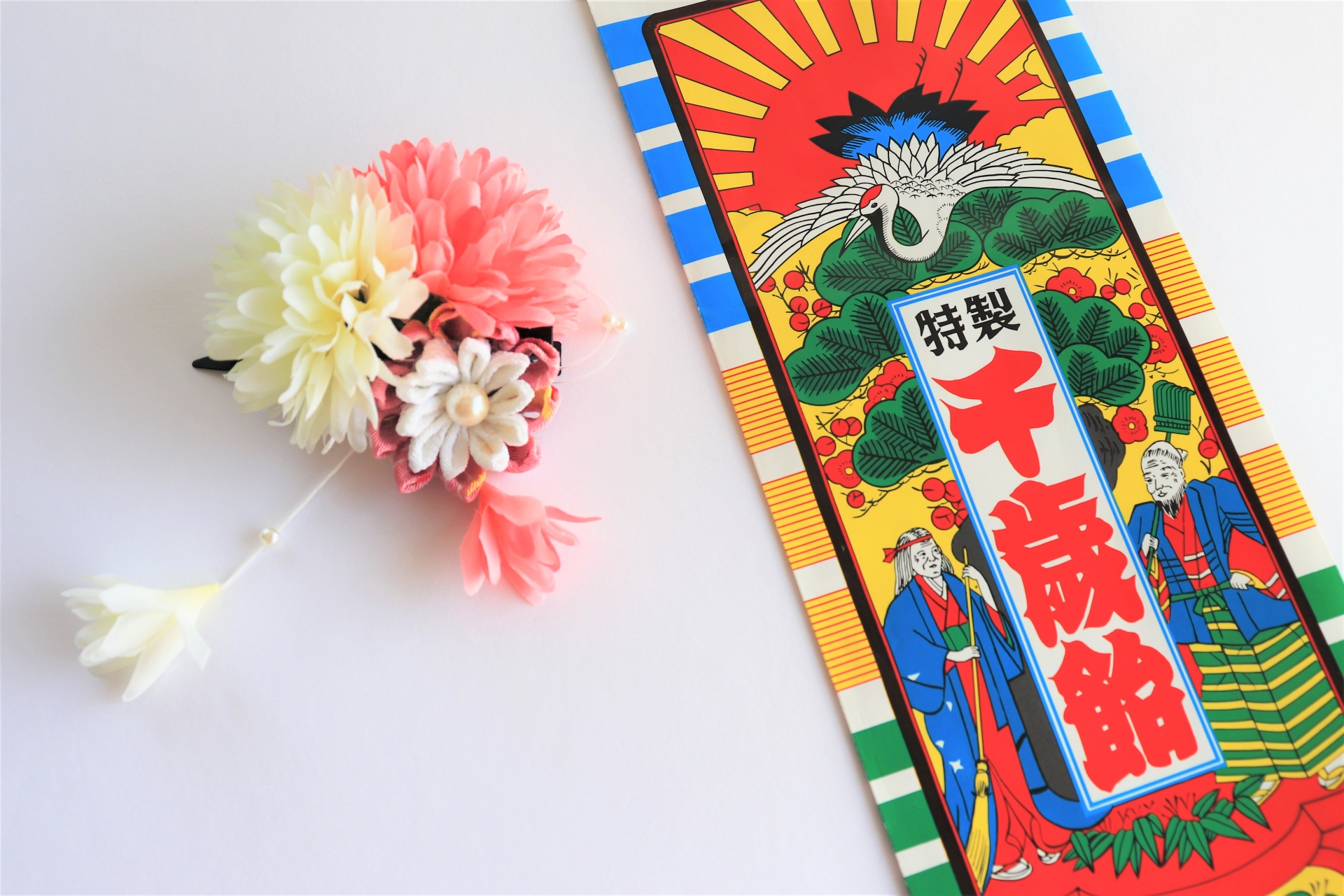
Take pictures of their children in Kimono or Hakama
Taking pictures is definitely the best and most memorable way to celebrate special days in life. If you visit shrines or temples on November 15th in Japan, you will see a certain number of families take pictures of their children dressed up in Kimono or Hakama. If you want to take pictures of children, don’t forget to get permission from their parents beforehand. Some families also ask professional photographers to take pictures in a studio and keep them in a family photo album.
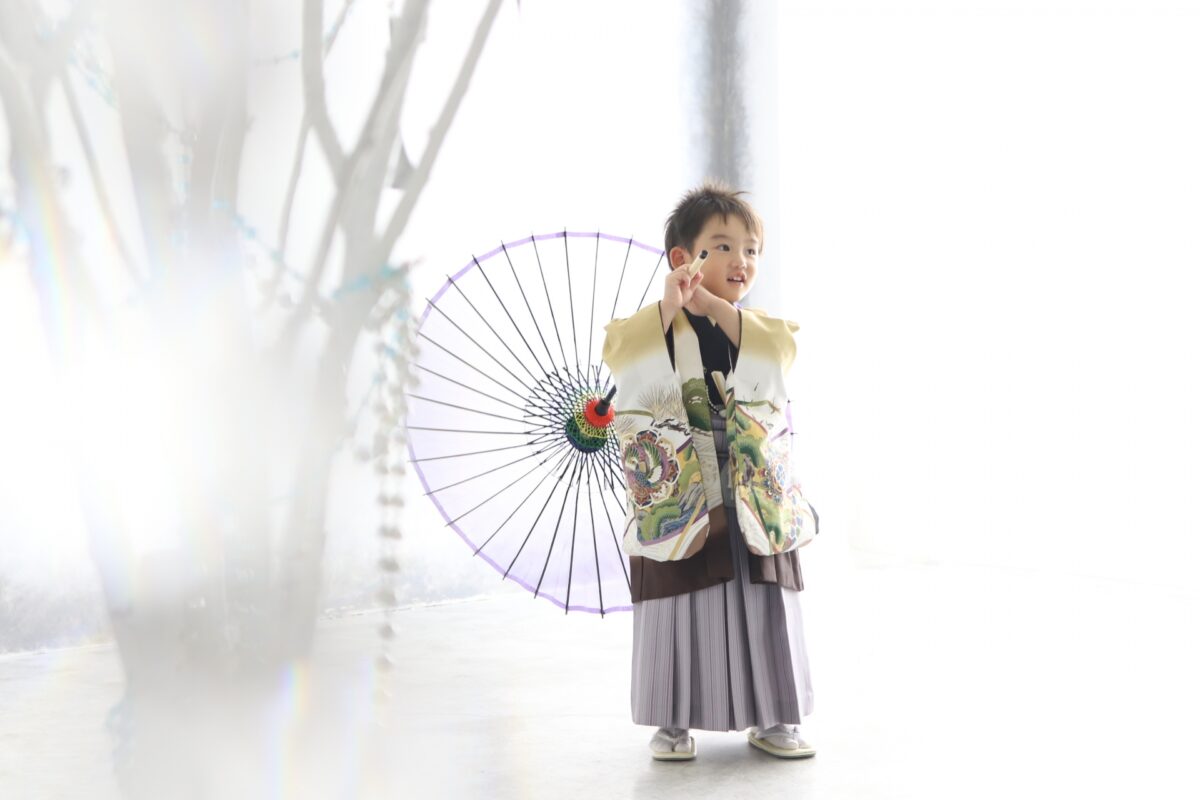
Japan Wonder Travel Tours
Japan Wonder Travel is a travel agency that offers guided tours throughout Japan.
From private walking tours to delicious Food and Drink tours, we can help you organize the best tours just for you! If you want to explore Japan and learn more about the history and backstories of each area you are visiting, our knowledgeable and friendly English speaking guides will happily take you to the best spots!
In addition, we can provide you with any assistance you may need for your upcoming trip to Japan, so please feel free to contact us if yu have any questions or need some help!
▶Tokyo Tsukiji Fish Market Food and Drink Tour
Explore the most lively and popular fish market in Tokyo and try some of the local’s favorite street foods and sake with one of our friendly and knowledgeable English speaking guides!

▶Tokyo 1–Day Highlights Private Walking Tour (8 Hours)
There’s no better way to explore an area than taking a tour with a knowledgeable local guide. You will have the chance to learn about the history and interesting background stories of Tokyo, as well as discover some hidden gems which can be hard to do without a guide.

▶Mt. Fuji Day Trip Bus Tour from Tokyo
Experience the breathtaking views of Mt. Fuji by visiting the highlights of the area on our guided sightseeing bus tour! Departing from Shinjuku in central Tokyo, you can travel comfortably to all of the best spots in the area by bus.

Shichigosan is a special day for parents and their children that comes only three times in their early childhood. Although the traditional custom and style of Shichigosan have changed for over centuries, it still plays an important role in Japanese culture and society. If you want to celebrate Shichigosan with your children, you can take the great opportunity as their first experience of Japanese culture!
Follow us on Instagram, Facebook, Twitter, and TikTok for more travel inspiration. Or tag us to get featured!
Happy traveling!
Other articles you might be interested in
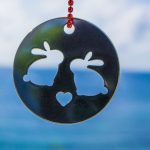
Miho Shimizu is a Japanese freelance writer settled in Shizuoka with her husband and two rabbits. Fascinated with traveling at the age of 18, she has spent most of her long holidays exploring incredible spots around Japan. Also love to listen to music, draw, and read novels over a cup of green tea.
This post may contain some affiliate links. When you click through and make a purchase we may receive some commission, at no extra cost to you.
